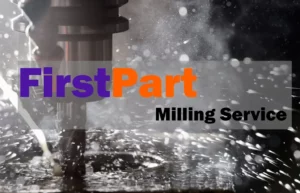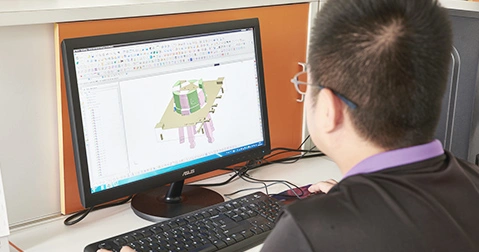Introduction
This guide is intended as an introduction for anyone who has just entered the exciting and rewarding world of Computer Numerically Controlled (CNC) machines. The aim is to familiarize you with the typical steps required to create a CNC project from start to finish and to provide a glossary of terminology that will help you better understand some industry jargon.
Much of the information applies to all types of CNC machines but in this guide we will focus on machines that are generally called CNC pantographs.
If you are a beginner, if you are looking at a CNC machine as a new hobby, if you are starting your new business or, if you are adding CNC technology to your business, this guide will be a good place to start. If you don’t have a CNC machine yet but are considering buying one, this guide will also help you understand more about how they work and provide you with some important food for thought to make a correct decision.

CNC overview
A “CNC Pantograph” is a machine controlled by a computer (or by a control board in the professional versions) on which an electro-spindle is mounted, on which a cutting tool is mounted (drills, cutters ). Typically a CNC pantograph is characterized by 3 axes of movement, that is the X, Y and Z axes.
The position of the spindle, and therefore of the tool, is determined by a computer that tells the motors how much to move each axis in different directions. Using this positioning method, any position within the machine’s working area can be identified and the spindle can be moved within this area.
Since the machine is controlled by a computer that guides it in its movements, the operator uses a program to create the shapes he wants to cut and creates the path that the machine will have to follow. For the purpose of this guide, we will refer to machines and this technology simply as “CNC”.
As with any technical topic there are different variations and nuances in the terminology but we will try to keep the one easier and more understandable. The image below shows the typical composition of a CNC (there are several variations anyway), with its basic elements and the indicator of the direction of movement of the axes (X, Y and Z).
For many, the knowledge of CNC means increasing their skills that are added to those of knowing how to work wood or stone for example. Knowledge of these related topics could be of great help as the learning curve increases.
To start, however, the best way to approach a CNC is to consider it a new skill to hone, start with the basics, read, learn to practice software as much as possible and take advantage of the various ways you have to ask questions and get help. Over time, you will be as successful as that of thousands of other CNC operators (fanatics!) Who left before you?

Key knowledge About CNC Machining
As with many other subjects, the more time you invest in studying CNC and related topics, the more skills and competences you will acquire. To get the best results, there is some basic knowledge you should focus your efforts on:
1. Knowing how to use a computer
A common requirement for all activities to be done with a CNC is knowing how to use a computer. You will work with computers and programs during almost all stages of the process and as soon as you start creating your works and you will need to understand and know how to do simple computer operations.
These can be starting and stopping running programs, saving, copying and deleting files, finding files saved on your computer and install programs and updates.
Your CNC machine is also managed by a computer which could be a separate PC from the machine itself (CN) or a dedicated control board.
This guide assumes basic knowledge regarding computers and the Windows operating system, if you don’t feel you have a good level of computer knowledge and skills, or you are new to the world of PCs, then you should take lessons or buy a general guide on how PCs work.
2. Toolpath Design and Software
Before you can CNC cut anything, you need to initially create the shape the machine will need to follow to cut the parts. The software you choose will play an important role in the realization of projects with your CNC.
Basically, the design software allows you to transform the “pen and paper” ideas into a set of instructions used to manage the machine. If done correctly, the end result will be a product that you can touch and hold, that will have value and give you a great sense of satisfaction!

3. Use and maintain your CNC machine
If you currently own or use a CNC machine, you already know how important it is to keep the machine always working and in excellent condition, to know and understand its limits and to be able to configure it correctly in order to perform the machining in a precise manner.
If you don’t own a CNC yet, then it’s important to invest some time thinking about what you want your machine to make, this can eliminate a lot of hassle in the future.
Cost will always be a very important factor, but you have to understand that you have to be able to balance it with the capabilities of the machine, because nothing is more expensive than a machine that cannot do what you need.
For example, if you want to cut large slabs then the desktop version is certainly not the best choice. Nonetheless, if you only have one room that only a small machine can fit then the bench version may be your only option and you will need to understand its limitations and how big at most the blank can be cut.
Only you can determine the best choice that is right for you based on your budget and needs.
4. Knowledge of materials and tools
To obtain good results, one cannot ignore the material being worked on and the tool being used. The type of material will be an influencing factor at every stage of the project – from the initial concept to the finished product.
The common materials that are worked with a CNC are: wood, plastic, expanded polyurethane stone, soft metals (non-ferrous) such as aluminum, brass etc … If you still do not have a good knowledge of the types of materials you want to use, there are several sources of information that can help you.
The classic questions you need to answer for the type of material include: the correct choice of tool (bits), the cutting speed of the tool in the material (feed rate and plunge rate), the amount of material that can be remove at each pass (depth per pass and depth of cut) and the tool rotation speed (spindle rotation speed – round per minute RPM). Tool suppliers offer information on the correct parameters for the use of their drills and cutters.
Conclusion
This guide gives some food for thought for those approaching the world of CNC machining. As you can see, the various phases are connected to each other but to have a good final result you must perform them all accurately.










